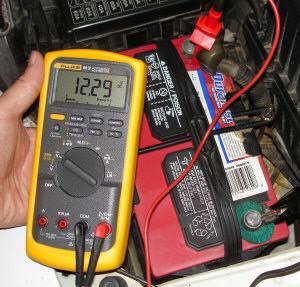At some point in your car’s life, there will be a time when you need to do some diagnostic checks on your own. It’s important to learn how to do a few essential tests to your car to ensure it’s running smoothly and able to take you to your destination. It’s also smart to have the basic knowledge of your car’s systems in case something goes wrong. Drivers should have the capabilities to conduct a VIN lookup free and check their own oil levels. Additionally, knowing how to check the car battery charge is another vital piece of basic car knowledge.
Table of Contents
1. Car Battery Basics
For most vehicles in normal driving conditions, car batteries last approximately four to seven years. Depending on your driving style, location, and other factors, the battery may have a higher chance of working for a little longer. If your car battery is frequently going dead or having other issues, it may be time for a replacement car battery.
2. Tools
If your battery is older and you haven’t invested in a replacement yet, it’s a good idea to periodically check the charge levels before trips. Here is how to check a car battery. You’ll need a simple tool, either a voltmeter or a multimeter. A voltmeter is primarily used to check the car battery’s voltage. A multimeter is a device that checks the voltage of the battery, and it also reveals current and resistance.
3. Voltmeter

Before you begin testing your car battery, you must turn off the ignition. The car’s lights or electronics system must be off in order for the test to be accurate. If you’re using a voltmeter, connect the red lead to the battery’s positive terminal. Then, connect the black lead to the terminal for negative on the car battery and look at the charge levels. A charge of 12.4 or higher is typically acceptable. Lower than that may signal a problem. Remove the negative terminal first after the test.
4. Multimeter
With a multimeter, you should have the car’s engine off. Before testing, turn on the lights for about two minutes and place the multimeter’s settings to 15 to 20 volts. Turn off the lights and then connect the multimeter to the positive and negative terminals on the battery. The battery’s charge should read around 12.6 if it’s still good. If the charge settings read something lower, it may be a sign that you need a new battery.
5. Power Probe
Here again, you must switch your car engine and headlights off so that the test may give accurate results. Like the tests with voltmeter and multimeter, this is also a highly authentic test. To begin with, you will have to remove the battery’s positive terminal cover first of all and then you will connect the positive terminal of your power probe, usually red in color, to the positive end of the battery. After this, the negative lead of the power probe will be attached to the negative terminal of the battery. After you have attached the two terminals of the battery to their counterparts on your power probe, it is the time to connect the lead of your power probe to the positive terminal of the battery to let the probe read voltage. Then check the power probe reading for the result of the test. If you find it between 12.4 to 12.7 volts, you may claim the health of your car’s battery in a good condition.
6. Cranking the engine
The cranking of your car engine goes side by side with the voltage reading process of your battery. For this purpose, ask your assistant or helper to crank the engine by turning the ignition until the starter engages. Advise him to hold the position for 2—3 seconds while you check the battery voltage drop.
At the point of cranking, you will check the reading of the power probe which you have already attached with your car battery. The voltage reading should not drop below 9.6 volts. If it drops below 9.6 volts, your battery is sure to have gone sulfated and will not accept or hold the charge.
7. Ammeter
Used to measure any flow, the ammeter will check the battery’s charging condition if you have connected it in the path of the circuit the same way. It will also tell you if the charge is going in or out of the battery, enabling you to judge if the generator is charging the battery or not with the amount of load on it. A lower charge reading will tell the battery has gone weak and vice versa. An ammeter is better as it gives results faster than the voltmeter or multimeter.
8. Battery health indicator
With a round glass cover to show the condition of the battery, this very important device is coming fitted in most of the vehicles. When you switch on the ignition, the arrow will point near the division between the red and green bands. If the round glass cover gives a green color, your battery is healthy. The red color shows a weak battery whereas a transparent or black color verifies the battery has gone dead.
9. Problems on the Road
Even after knowing the status of your battery’s charge, you may still have a problem on your hands if your car won’t start. In that case, you may need to get a jumpstart to be able to drive your car to a service center or another spot to get a battery replacement. All drivers should have a jump kit ready in their cars in case of a dead battery.
10. Be Ready
Being a responsible driver means preparing yourself in case of a mechanical failure or problem. Having the knowledge to diagnose potential issues and the tools to get answers is one of the best ways you can get more out of your car and understand when it needs service.





